-J. Michael Bestul is a writer for the Addison Recorder. Stephanie Ruehl works in a comic book shop. They’re married and have a lot of discussions about comic books and graphic novels. Combine all that into a biweekly feature and you get “J. & Steph Talk About Comics.”
Halloween and comic book conventions both spotlight the idea of dressing up like your favorite characters. Steph is an occasional cosplayer, and -J.’s Halloween archive contains many comic book costumes, so we decided to use this year’s costumes to talk about the books that inspired them.
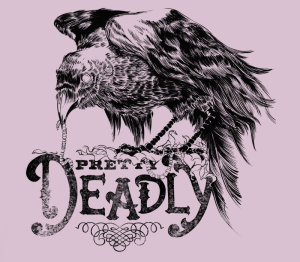 Pretty Deadly (vol. 1)
Pretty Deadly (vol. 1)
Words by Kelly Sue DeConnick, art by Emma Rios, colors by Jordie Bellaire, letters by Clayton Cowles
Steph: I adore Kelly Sue DeConnick. I just want to get that out of the way, so everyone knows that I may be biased in this review, but really, Pretty Deadly is just plain good.
-J.: It’s also a story within a story, the main characters of which make a living by… telling a story. Have I mentioned that I like meta-fiction?
Steph: This comic combines two genres I usually do not like: horror and western. I am a sci-fi/fantasy type of girl. The only reason I decided to give the book a chance was because DeConnick was the writer, and I’m glad I did.
Pretty Deadly is an old-timey Western tale about an aged blind man (Fox) and a young girl with mismatched eyes and a vulture cloak (Sissy), who travel around sharing the ballad of Deathface Ginny, a spirit of vengeance born of Death’s love for a mortal woman. But after one particular retelling, Sissy does something that sets in motion some serious trouble.
-J.: One of the things I really like about this arc is the slow accretion of plot that builds throughout the book. Sissy and another character basically kick a pebble down a metaphorical hill, which turns into a massive rockslide by the end.
By doing this, Fox and Sissy have unleashed Deathface Ginny upon the world. Death doesn’t want her loose amongst the mortals, so he sends Alice — a ruthless woman in black, and a fellow reaper in service to Death — after Ginny. But Alice is a sadistic hunter, punishing every person who came into contact with Fox and Sissy. The violence builds until Deathface Ginny makes her entrance…
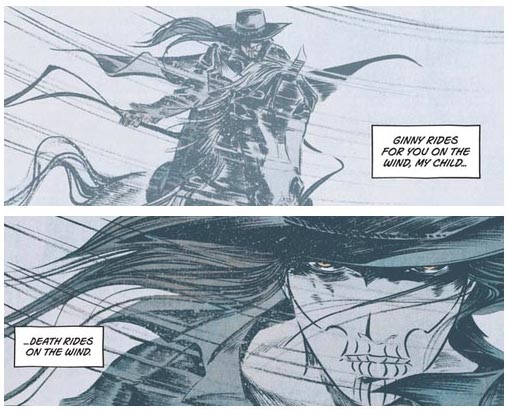 Steph: Ginny is hell-bent on the destruction of Fox, until she comes across Alice brutally punishing a family for harboring him. Though Alice and Ginny are both agents of Death, she refuses to let Alice continue on her path of destruction.
Steph: Ginny is hell-bent on the destruction of Fox, until she comes across Alice brutally punishing a family for harboring him. Though Alice and Ginny are both agents of Death, she refuses to let Alice continue on her path of destruction.
-J.: As I made my way through this story, it reminded me more and more of reading The Sandman for the first time. The style of artwork, the motivations of humans set against the supernatural, and the humanizing of the supernatural — it all felt in the vein of Sandman, but the setting and story were something completely new. And it has a down & dirty morality practiced by sullied characters with empathetic and believable motivations. I can grok a story like that. I also delight in the fact that volume 1 of Pretty Deadly is a reverse-fable, a tale told by Bones Bunny about humans.
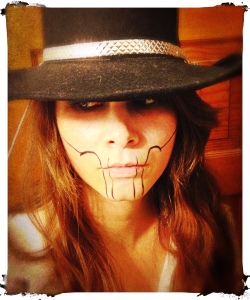 Steph: I found myself caring for these characters, especially Ginny. She was angry, brave, and strong, physically, mentally, and emotionally. Even though her father raised her to be a reaper of vengeance, she refused to be a blind vengeance. She knew the difference between right and wrong. She lets her prey give their side of the story and actually listens. Her empathy is what leads to her making the right decision, for Sissy and for, ultimately, humanity. I may be focusing too much on this one character, but for me, she is what hooked me, genre be damned. DeConnick is a natural story teller, and the layers of this book, the character relationships, are very enticing and engaging. Also the inspiration of my Halloween costume.
Steph: I found myself caring for these characters, especially Ginny. She was angry, brave, and strong, physically, mentally, and emotionally. Even though her father raised her to be a reaper of vengeance, she refused to be a blind vengeance. She knew the difference between right and wrong. She lets her prey give their side of the story and actually listens. Her empathy is what leads to her making the right decision, for Sissy and for, ultimately, humanity. I may be focusing too much on this one character, but for me, she is what hooked me, genre be damned. DeConnick is a natural story teller, and the layers of this book, the character relationships, are very enticing and engaging. Also the inspiration of my Halloween costume.
-J.: It’s also the case of the perfect setting and genre for the tale. Though the open landscape seems free, it’s a land of prisons. It is a land where life has no value — not only because it’s modeled on a Leone-style Western, but because Death is a central figure. To value another’s life is to be an outcast and vagabond.
Steph: That does not leave me much to segue to your costume choice, -J. So now, for something completely different…
The Reason for Dragons
Words by Chris Northrop, art by Jeff Stokely.
-J.: Thinking up costumes has become increasingly difficult since I grew this facial hair. I can’t exactly bring back The Shade or Gambit without bidding farewell to the handlebars. But it also allows me to do a pretty keen Sir Habersham, a character from The Reason for Dragons.
The Reason for Dragons follows Wendell, a teenager who’s just trying to survive high school. He doesn’t find much solace at home, where he and his mechanic stepdad rarely see eye-to-eye. One night, after running away from some bullies, Wendell stumbles upon an abandoned Renaissance faire that had suffered a catastrophic fire years ago. There he meets Sir Habersham, a seemingly-crazy knight who protects the abandoned fairgrounds from a “dragon.” Habersham enlists Wendell as his squire, and their stories become intertwined.
-J.: This was a book I’d been looking forward to when it was first announced, because it had all the hallmarks of a story I would like. Dynamic art and narrative echoes of Don Quixote, Luigi Pirandello, and The Fisher King? Yup, sign me up.
Steph: Like I said before, I am a sci-fi/fantasy kind of girl, so of course I was excited for this story. Sir Habersham is definitely what I would assume would happen if you went crazy at an abandoned renaissance faire, -J.
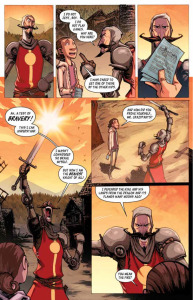 -J.: I cannot find fault in that assessment, Steph. And since the plot moves in a straight line, the characters and style of storytelling are where The Reason for Dragons needs to excel — and does so in spades. Sir Habersham is an obvious fish out of the water, but discovering his history is instant pathos. I love how Stokely’s art creates movement between the panels, evokes emotional tension in expressions, and is full of little character details. When Habersham is found beaten and injured, for example, we can tell how bad the damage is — his magnificent mustache is mangled and crumpled from the battle. Poor mustache.
-J.: I cannot find fault in that assessment, Steph. And since the plot moves in a straight line, the characters and style of storytelling are where The Reason for Dragons needs to excel — and does so in spades. Sir Habersham is an obvious fish out of the water, but discovering his history is instant pathos. I love how Stokely’s art creates movement between the panels, evokes emotional tension in expressions, and is full of little character details. When Habersham is found beaten and injured, for example, we can tell how bad the damage is — his magnificent mustache is mangled and crumpled from the battle. Poor mustache.
Steph: Wendall is a character on whom pretty much anyone could project themselves. It’s fun to see how he reacts to this crazy person, who is obviously harmless and lives in a world that seems to be so fantastical. Under it all, I spent the majority of the book, not really knowing, but knowing the dragon had to be real. That small, hopeful part of me wanted that kind, insane knight to get his dragon and regain his honor, because I knew it would show Wendell/the reader the wonders of being a kid.
-J.: That’s a good point. For all the literary riffing, this may be best classified as a young-adult graphic novel. The plot is straightforward, and revolves around three men who each have to confront new realities. But the storytelling is very self-aware; its epilogue plays with the Pirandello-esque stories-versus-reality narrative at the center of the book (and in the title of it).
To Sum It All Up…
Whether it’s an ongoing series like Pretty Deadly, or a standalone graphic novel (with backup stories) like The Reason for Dragons, these books succeed at telling tales of characters that are compelling and interesting. Both are great examples of how sequential art & storytelling can tell a variety of stories that connect with readers.

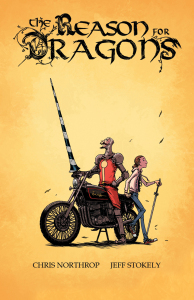
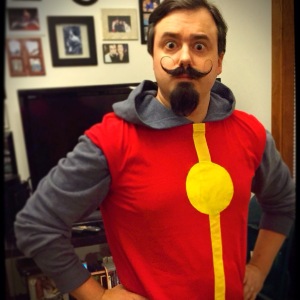






You guys looked great! Well done.